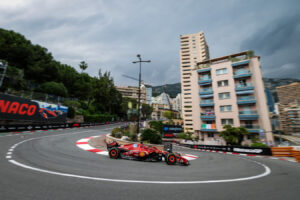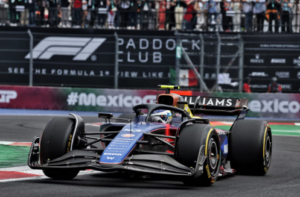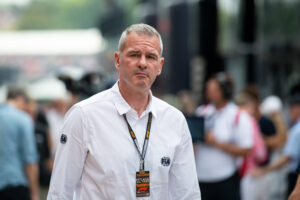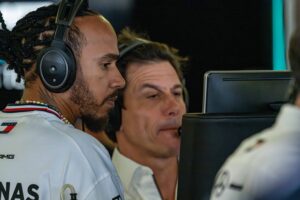The 2010 Formula 1 Season was a key year for F1. The season marked the return of Michael Schumacher and also marked the return of Mercedes as a team to the sport. It marked the rise of the dominance of Red Bull Racing, who would be the best team on track until the end of 2013, and marked the rise of Sebastian Vettel, who secured his first ever World Drivers Championship. But this is not all that 2010 will be remembered for.
The 2010 Formula 1 Season also marked the arrival of three new teams to the F1 grid in the form of Hispania Racing, Virgin Racing, and a re branded Lotus F1 Team. Of these three teams however, none remain, with Hispania folding at the end of 2012, Lotus folding at the end of 2014 after being re branded as Caterham, and Virgin folding just before the start of the 2017 Season, after entering administration as Manor.
Even before these three teams made their debut on track however, there was one team that failed to make it out of the garage entirely and failed to take off. The team’s name was US F1.
US F1 Team: America’s Stillborn Formula 1 Dream
US F1 were a racing team that had the ambition to bring America to the pinnacle of Motor Racing and into the world of Formula 1. The team’s aim was to promote American racing drivers and technology into the sport and to become the only F1 team to be based outside of Europe, with their factory being based in Charlotte, North Carolina.
The team was formed by Peter Windsor and Ken Anderson, both of whom who had experience in Motorsport, with Windsor being the former manager of Williams and Ferrari, and Anderson being the former technical director of Haas CNC Racing (now known as Stewart Haas Racing).
The pair unveiled their plans to create a Formula 1 team in February 2009 during an interview on the Speed Channel, announcing that they were intending to enter the team for the 2010 season. Four months later in June, US F1 were granted entry to compete in Formula 1 in 2010. Up until this moment, things had been relatively straightforward for Windsor, Anderson, and the newly formed US F1 Team, however, after having delays in signing the Concorde Agreement, progress gradually began to stall and things started to come to a halt.
Through the delay in signing the Concorde Agreement caused by the controversy between the FOTA and the FIA in 2009, US F1 were quickly on the back foot, with their planned production schedule being delayed due to ongoing debates about technical regulations for the 2010 season. Despite such setbacks, the team’s first car, the Type 1, was to be powered by Cosworth engines for the forthcoming season and would feature their very own gearbox – the only new team on the grid to be using their own gearbox for the season.
Following doubts expressed by Bernie Ecclestone that the team would not be ready to compete in 2010, US F1 confirmed Jose Maria Lopez in January 2010 as their first driver. Lopez joined the team with a considerable $8 million in sponsorship, suggesting that the team were using pay drivers to fund their dream to compete in Formula 1. This was something that the team denied. Later in the same month, US F1 confirmed former Super Aguri and Honda F1 test driver, James Rossiter as their final driver, competing their F1 lineup for the season. Despite having the aim of fielding an all American driver lineup, this was something that the team failed to deliver upon, with their drivers being Argentinian and British, although NASCAR‘s Danica Patrick was rumored to be in contact with the team over a potential seat in Formula 1.
By February 2010, the threat of imminent collapse was looming for Windsor and Anderson following the withdrawal of financial backing of the team’s primary investor, Chad Hurley – the co-founder of YouTube. After Anderson entered talks with the FIA to miss the first four races of the 2010 season, a press release from Locstein – a potential sponsor for US F1 – revealed the true situation of finances at the team, with the sponsor refusing to invest after realizing that the team would not be able to compete for the entire season.
After allegations from senior management at US F1 that Anderson and Windsor had been mis-managing the team, an inspection from Charlie Whiting revealed that the team were not capable of competing in Formula 1.
Following a failed merging with Stefan Grand Prix – another proposed F1 team for 2010 that had their bid declined one year earlier in 2009, and after failure to defer entry until 2011, team personnel at US F1 were dismissed from their duties in early March. The team were reported as being permanently closed at the start of April by the Charlotte Business Journal.
Following a hearing that was conducted by the FIA World Motorsport Council one year after US F1 were granted the right to compete in Formula 1, the team were fined €309,000 for failing to compete in the 2010 season. The team were fined further with the costs of the hearing and were banned from competing in any championship that was associated with the FIA, marking the end of the American F1 dream that the US F1 Team longed to fulfill.
Since the collapse of the US F1 Team, Formula 1 has seen the birth of an American team through Haas F1 – part of Stewart Haas Racing that is owned by Gene Haas, marking the arrival of America in the pinnacle of Motorsport.
Nevertheless, the story of the US F1 Team presents the harsh reality of competing in Formula 1, and how expensive and difficult it is to run a team in the top tier of Motorsport.






